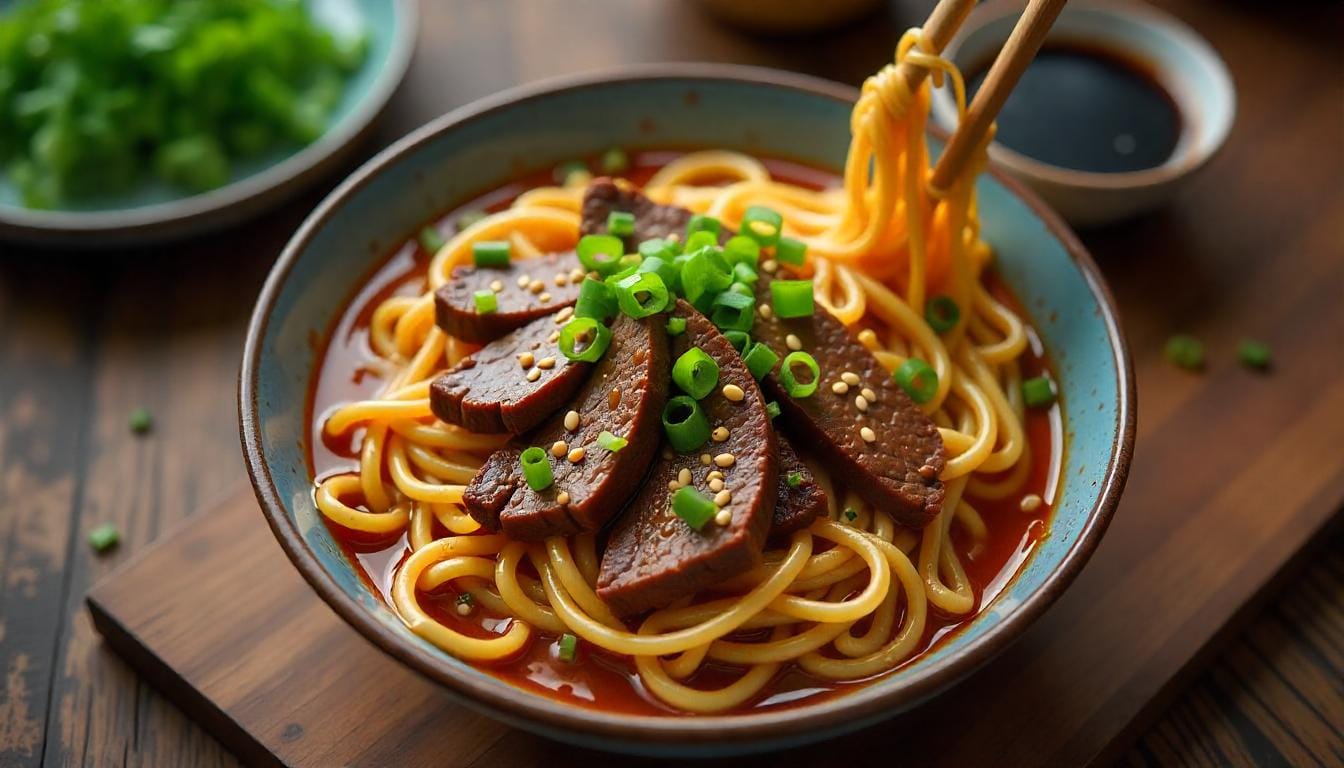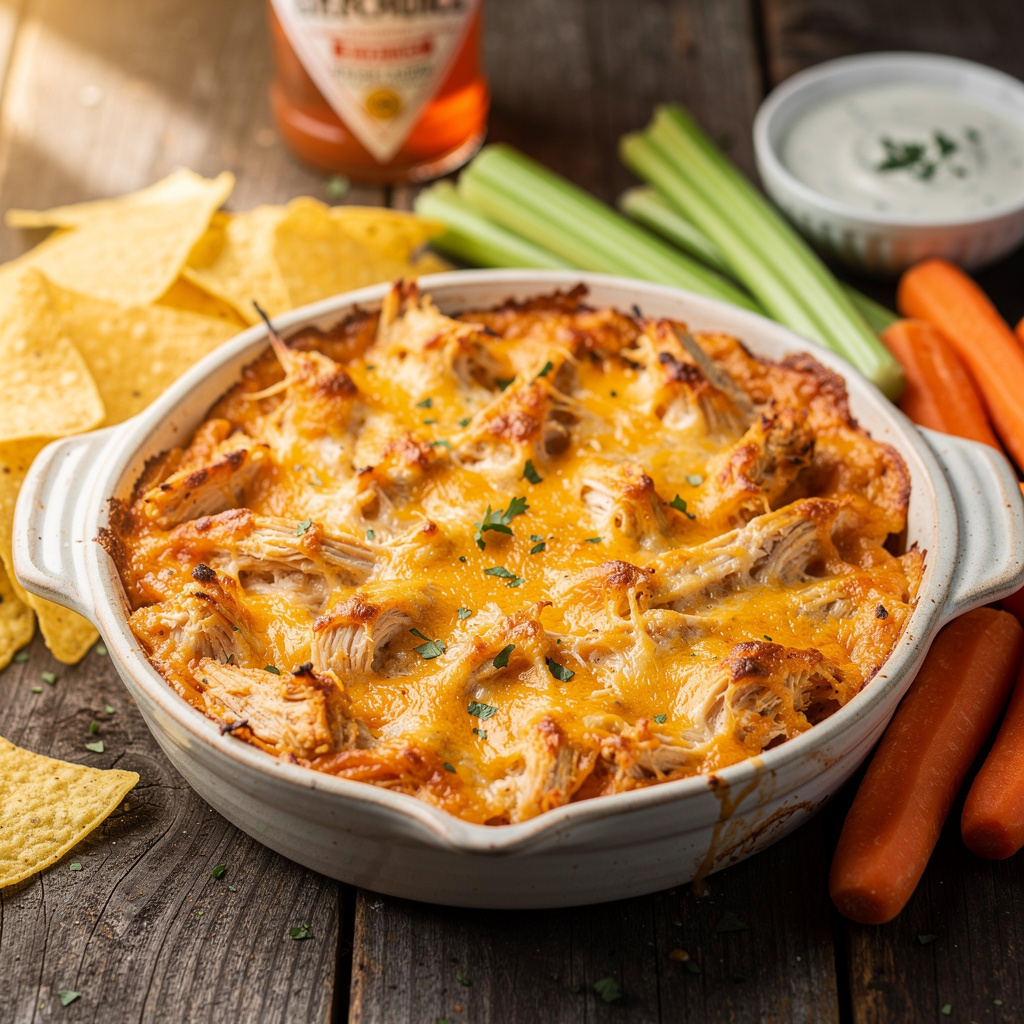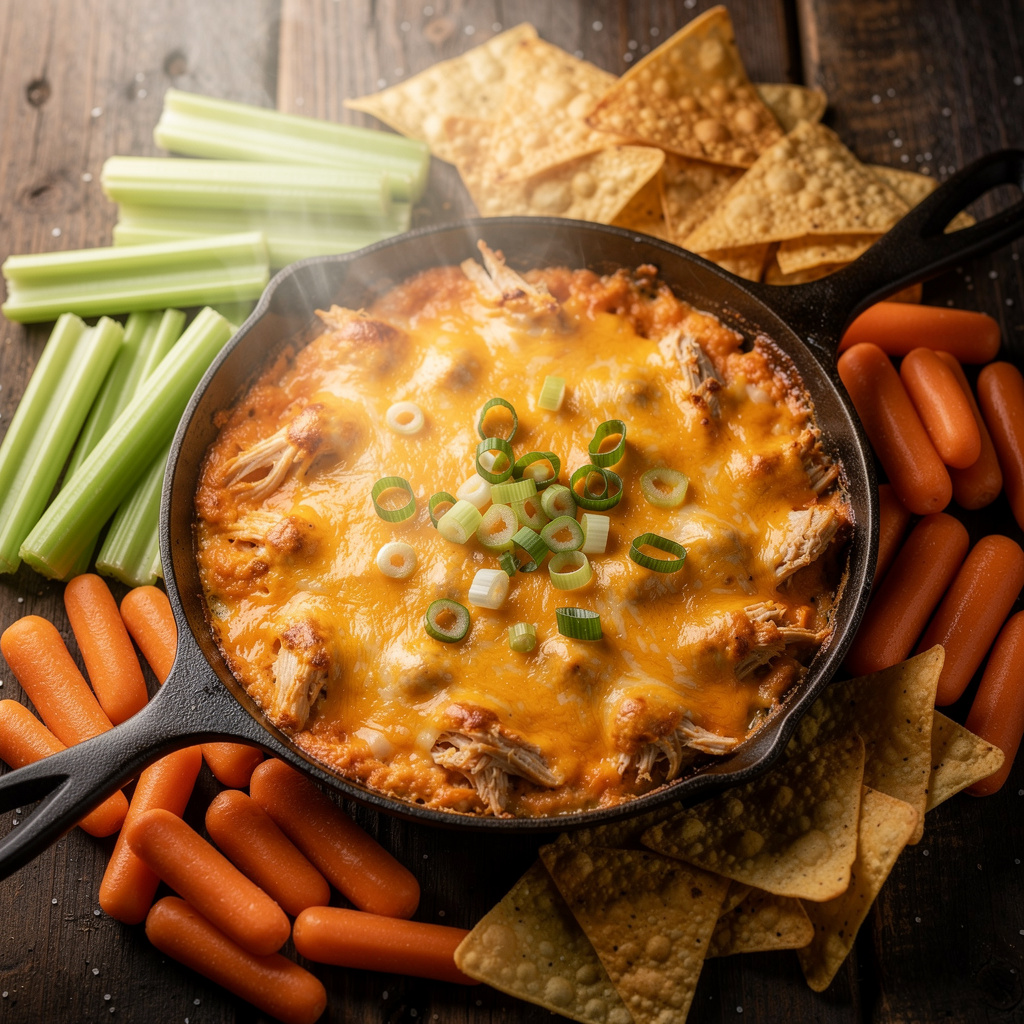Mongolian Beef noodles is an enticing dish that blends delicious noodles, tender beef, and a savory sauce into a tasty meal that’s more satisfying than a takeaway. This article will look at the entire recipe, from its origins and the essential ingredients to expert suggestions for cooking the dish to the highest standard. Learn how to adapt the dish to fit your personal preferences and the needs of your diet. Are you ready to enter deep into the realm of Mongolian Beef Noodles? Let’s begin!
Table of Contents
Introduction to Mongolian Beef Noodles
What Are Mongolian Beef Noodles?
Mongolian Beef Noodles are a fusion meal that draws inspiration from Chinese-American food. In essence, it’s a stir-fry made of tender pieces of beef coated with a rich and savory sauce and served with perfectly cooked noodles. It is a perfect blend of sweet, salty, and umami flavors, which makes it a favorite dish for many.
This recipe is as adaptable in its versatility as it is delicious. It is possible to alter the ingredients to suit your tastes or food limitations. This makes it an ideal recipe for dinners on the go or for special occasions. No matter if you’re a fan of mein, ramen, and rice noodles, you’ll find a version of Mongolian Beef Noodles that is ideal for you.
Why This Dish Is Loved Worldwide
What is it that makes Mongolian Beef Noodles so popular? It’s the way that it blends simplicity and extravagantness. With only a handful of essential ingredients like hoisin, soy sauce, garlic, hoisin, and ginger, you can make an appetizer that tastes as if it’s straight from a posh restaurant.
Additionally, it’s a one-pan marvel. Easy to prepare, simple to clean up, and full of delicious flavor, this recipe checks all the requirements for home cooks who are busy. In addition, the noodles soak up the delicious sauce like sponges, resulting in a harmonious blend of flavors and tastes that are utterly delicious.
The History and Origin of Mongolian Beef Noodles
Is It Really Mongolian? The Misnomer Explained
Contrary to what it’s called, Mongolian Beef Noodles aren’t actually from Mongolia. This dish actually has its origins back to Chinese-American food. The word “Mongolian” was likely used to convey a sense of exoticism. In reality, it has many similarities with foods of the Northern Chinese regions, where the bold flavors of garlic, soy sauce, and ginger dominate.
“Mongolian” or the “Mongolian” label became popular in Western countries around the middle of the 20th century, when Chinese restaurants began adapting traditional recipes to fit American preferences. The inclusion of noodles was probably an inspiration from Lo My and other stir-fried noodles popular in Asian cuisine.
Evolution of the Dish in Chinese-American Cuisine
The popularity of Mongolian Beef Noodles increased after it was first introduced in takeaway menus. Its short cooking time and intense, sweet-savory flavors have made it a favorite among those who were looking for something delicious but not too complicated. In time, home cooks have embraced the dish and added personal touches like a variety of ingredients and different sauces, and they have even substituted ground beef for ground.
The dish is continuing to evolve, with endless variations that can be found in cookbooks, online blogs, and YouTube tutorials. Although it is still a popular staple in Chinese-American food, its variety makes it a popular recipe across the world.
Essential Ingredients for Authentic Mongolian Beef Noodles
The Star Ingredients: Beef Cuts and Noodles
In order to create Mongolian beef noodles, it’s essential to select the correct beef and noodles for optimal outcomes. The following are the ingredients you’ll need:
- Flank steak 1 pound thinly cut against the grain to create tender bites.
- Lo mein noodles are 8 ounces cooked al dente as per instructions on the packaging. You could substitute rice, ramen noodles, or spaghetti if you need to.
The two ingredients are the basis of the dish and provide an ideal balance of textures – tender meat and chewy noodles.
Key Sauces and Spices: Soy Sauce, Hoisin, and More
The sauce is the reason that Mongolian Beef Noodles are so delicious. To make it, collect the following ingredients:
- Soy sauce: 1/4 cup (low-sodium recommended).
- Hoisin sauce: 2 tablespoons.
- Brown sugar two tablespoons.
- Beef broth 1 cup.
- Cornstarch 1 tablespoon mixed with two tablespoons of water to add a thickening agent to the sauce.
- Sesame oil one teaspoon.
- Garlic: 4 cloves, minced.
- Ginger 1 teaspoon, chopped or grated.
- Flakes of red pepper 1/4 teaspoon (optional to add a touch of spice).
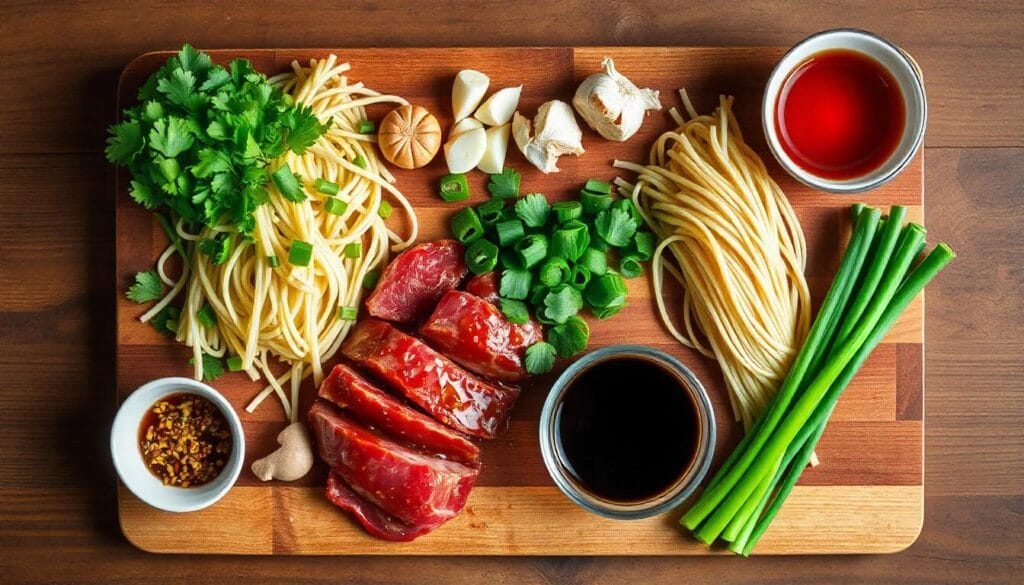
Optional Additions for Customization
Feel free to make your Mongolian Beef Noodles by using these ingredients:
- Vegetables: 1 cup of finely chopped onions, bell peppers, or broccoli florets to add hue and crunch.
- Green onions, two tablespoons chopped to garnish.
- Sesame seeds, one teaspoon to garnish.
This recipe will ensure the perfect harmony of flavors in each bite. No matter if you stick to the traditional recipe or give it your personal touches, the dish is bound to please! Contact me for more information or modifications!
Honey or brown sugar adds some sweetness, and adding a dash of beef broth can enhance the richness of the flavor. Do not forget to include cornstarch, which aids in thickening the sauce and provides the meat with a glossy coating.
Optional Additions for Customization
One of the great things to love about Mongolian Beef Noodles is the fact that they can be adapted. Include bell peppers and broccoli or snap peas to give the perfect burst of color and nutritional value. Do you like spice? Add chili paste or Sriracha. Prefer a richer dish? Add a spoonful of peanut butter or oyster sauce.
Step-by-Step Recipe Guide
Preparing the Beef: Tips for Tenderness
- Cut the beef 1.25 pounds from flank steak and slice it thinly along the grain. This will ensure that the meat is soft and easily chewable.
- Marinate the steak in a bowl; mix one tablespoon of soya sauce, one teaspoon of cornstarch, and one teaspoon of sesame oil. Incorporate the beef into the mixture and allow it to sit for 20-30 minutes to marinate.
To make a ground beef version, make use of 1-pound lean ground beef that doesn’t require marinating. Just cook it in step 3.
Crafting the Perfect Stir-Fry Sauce
- Preparing the sauce In a small bowl Mix:
- 1/4 cup low-sodium soy sauce
- 2 tablespoons hoisin sauce
- 2 teaspoons of brown sugar
- One cup of broth from beef
- 1 tablespoon of cornstarch dissolved in 2 tablespoons of water
- Incorporate aromatics. Add four cloves of minced garlic and one teaspoon of grated ginger. To add a little spice, add one teaspoon of red pepper flakes.
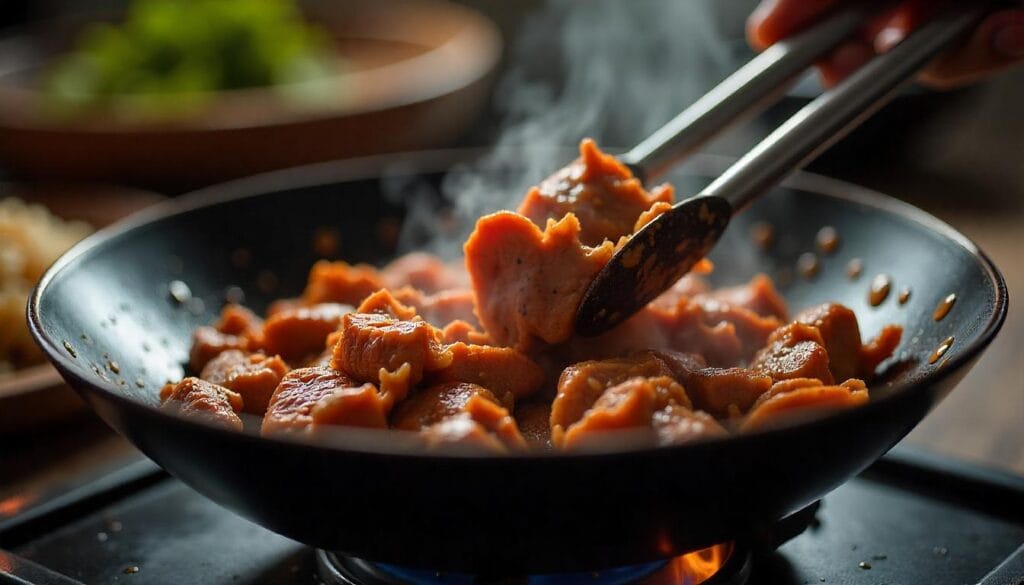
Cooking Techniques: Searing, Mixing, and Serving
- Cook the beef :
- 1. Heat one tablespoon of vegetable oil inside a pot or large skillet on medium-high heat.
- Place the beef slices marinated in one layer and sear for about 2 minutes on both sides. Then, remove the steak and place it aside. If you are using ground beef, cook until browned. Then, break it into smaller pieces and drain off any fat that has accumulated.
- Stir-fry the vegetables. :
- Then, add one more tablespoon of oil to the skillet, if required.
- Mix in 1 cup of vegetables (e.g., chopped onions, bell peppers, and broccoli leaves) and stir-fry for 2-3 minutes or until the vegetables are crisp and tender.
- Mix the sauce. :
- Pour the sauce you have prepared into the cooking pan, and make sure to bring the sauce up to a simmer.
- Cook for 1-2 minutes, until the sauce becomes thicker.
- Incorporate the noodles and beef. :
- Incorporate 8 ounces of Lo mein noodles that have been cooked and Seared Beef.
- Mix everything well so that all the noodles and beef are evenly coated with sauce.
- Serve and garnish :
- Move your Mongolian Beef noodles onto the serving dish.
- Serve with two tablespoons of diced green onions and one teaspoon of sesame seeds to enhance flavor and appearance.
This step-by-step guide will ensure the most delicious and perfectly cooked dish each time. Contact me for clarifications or modifications!
Nutritional Value and Variations of your Mongolian Beef Noodles
Healthy Substitutions for a Lighter Dish
Although Mongolian beef noodles are unquestionably delicious, you can reduce your weight without sacrificing flavor. Replace lean proteins such as chicken or ground turkey for beef. Choose low-sodium soy sauce and hoisin sauce in order to decrease the salt content.
Change traditional noodles with whole-grain or zucchini noodles in order to increase the amount of fiber and reduce carbs. Utilizing less sugar or substituting this with honey, stevia may help cut calories while still keeping the food sweet.
Gluten-Free and Vegan Adaptations
To make a gluten-free version, substitute tamari for soy sauce and rice noodles instead of the lo mein. Cornstarch, naturally gluten-free, can be used to thicken the sauce.
To make this dish vegan, you can substitute beef with seitan or tofu. Be sure your hoisin sauce and noodles are vegan, and you’ll have an equally satisfying option.
Serving Suggestions and Pairings for Mongolian Beef Noodles
What can you serve Mongolian Beef noodles?
Mongolian Beef Noodles is a dish that can stand alone However, having it with a variety of dishes can make your dinner truly memorable. Stir-fried or steamed vegetables such as snow peas, broccoli, or bok choy don’t just provide a pop of color; they also increase the nutritional value of the dish. A plate of fresh dumplings or spring rolls could add some variety and make the meal more festive.
Rice, plain or fried, is also a great option to offset the strong flavor. If you’re a lover of spicy foods and want to add a little chili oil or kimchi, it can kick the dish and is a perfect match for the sweet taste of the dish.
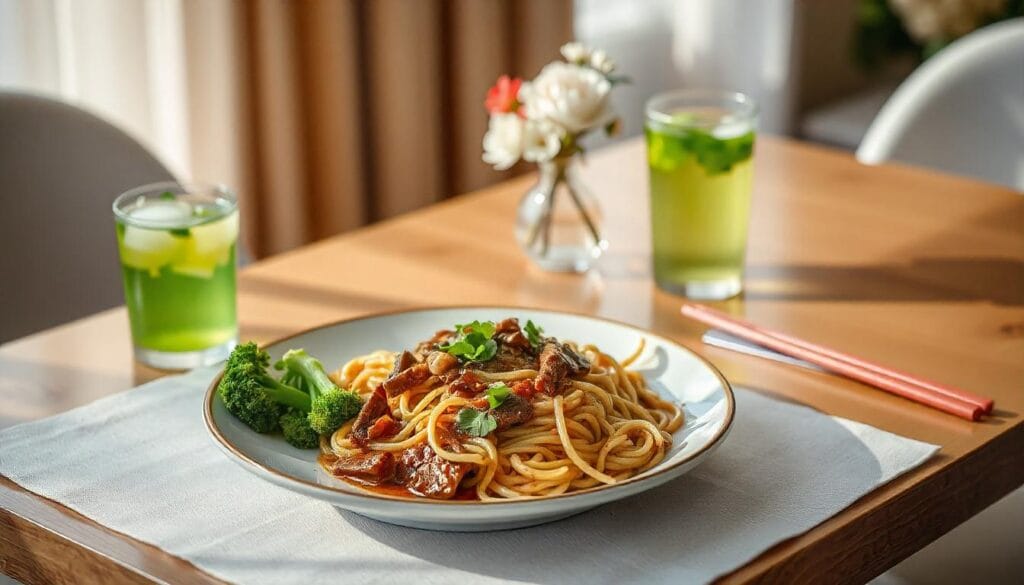
Beverage Pairings to Enhance the Meal
For drinks such as jasmine or green tea, jasmine tea is a refreshing fresh counterbalance against the smoky flavor of Mongolian Beef noodles.
Make sure to include non-alcoholic drinks! Drinking sparkling water with a splash of lime or lemon helps to cleanse the palate and complements the flavors of the meal.
Serving Suggestions and Pairings
What should you serve With Mongolian Beef Noodles?
Mongolian beef noodles are a dish that can stand alone. However, serving them with other side dishes can make the food truly memorable. Stir fried or steamed vegetables such as broccoli, snow peas, or bok choy not only bring a splash of color but also boost the nutritional value of the dish. A plate of fresh dumplings or spring rolls can add some variety and help make your meal more festive.
Rice, whether plain jasmine or fried, is also a great option to counterbalance the bold flavor. If you’re fond of spicy foods and want to add a little chili oil or kimchi, it can kick the dish and contrast perfectly with the sweetness of the dish.
Beverage Pairings to Enhance the Meal
For drinks like jasmine tea or green tea, tea can provide a mild, fresh counterpoint against the richness of Mongolian Beef noodles. If you’re hosting a dinner celebration or gathering, dry white wines like Sauvignon Blanc or a crisp beer can be a great match with the spicy and sweet flavors that the noodles provide.
Make sure to include non-alcoholic drinks! A splash of sparkling water with a hint of lime or lemon helps to cleanse and complements the flavors of the meal.
Expert Tips and Tricks for a perfect Mongolian Beef Noodles
Secrets for Achieving the Balance of Flavors
The secret to making the best Mongolian Beef Noodles is harmony of flavor. Check the sauce before you cook it, and adjust the saltiness, sweetness, or acidity to suit your preferences. A splash of rice vinegar or lime juice will make the dish more appealing; adding a little sugar can help balance salty tastes.
A high-temperature cooker is crucial for a successful stir-fry. It will ensure your meat and vegetables retain their taste and texture, without becoming inedible. Use an oven or a large skillet to guarantee a consistent cooking and plenty of space to mix the ingredients.
Common Mistakes to Avoid
A common error is cooking too long for noodles, resulting in an uncooked texture when mixing in the sauce. Be sure to cook the noodles undercooked so that they can keep cooking as they are added to the pan.
Another problem is crowding the pan during the searing of beef. Insufficient space in the pan lowers the temperature and results in steamed instead of seared meat. Make sure to cook the meat in small batches, depending on the amount of time.
Also, don’t skip fresh ingredients such as ginger, garlic, and scallions. They’re essential to the recipe for Mongolian Beef Noodles and make up its delicious, authentic flavor.
Related Recipes to Try Next
If you love Mongolian Beef Noodles, Here are three delicious recipes from your blog to make your mouth happy:
Sweet Hawaiian Crockpot Chicken: This recipe combines succulent poultry, sweet peaches, and an effervescent sauce to create an exotic-inspired dish. It’s great for busy days when you need delicious food without wasting time at the stove.
Thai-Inspired Chicken Meatball Soup
: Do you want something warm and filling? This soup is an excellent option. With aromatic spices and succulent chicken meatballs, It’s a delicious bowl of joy that goes well with Asian-inspired meals.
Mongolian Ground Beef Noodles: If you want to try a different take on the original recipe, consider this recipe made using ground beef. It’s equally delicious and delicious and comes with a speedier cooking process that’s perfect for dinners on the go.
FAQs About Mongolian Beef Noodles
What kind of noodles do they use for Mongolians?
Lo Mein noodles are a popular choice for making Mongolian beef noodles due to their chewy consistency and ability to absorb the delicious sauce. But you can replace them with udon, ramen, or even spaghetti if you need to. You must cook your noodles until all and ensure that they remain firm after mixing into the sauce.
What Cut of Beef Is Used for Mongolian Beef?
The traditional choice for Flank Steak is the option to prepare Mongolian Beef noodles because they’re soft and delicious and simple to cut finely across the grain. Alternately, cuts like sirloin and chuck flap tails are a good, cost-effective alternative.
What Are Beef Noodles in Chinese?
In Chinese food, the term beef noodles is often used to refer to the dish Niu Rou Mian, which is a dish made of cooked beef and hand-pulled noodles with the addition of a spicy broth. It is different from Mongolian Beef Noodles, which is a stir-fried dish that comes with a sweet and savory sauce.
Are Mongolian Noodles Spicy?
Mongolian Beef Noodles are usually mild, with a focus on sweet and flavorful flavors. But you can add some heat by adding chili paste and red pepper flakes or Sriracha to add a kick.
Final Thoughts
Mongolian beef noodles are more than an ingredient; they are a popular recipe that is a perfect blend of flavor, simplicity, and versatility. With tender beef, flavorful noodles, and a vibrant sauce, it’s ideal for weeknight meals or occasions for gatherings. No matter if you use the standard recipe or alter it to meet your personal preferences, it will always be pleasing.
The beauty of this dish is the flexibility it offers. From trying out different vegetables to switching noodles or altering the sauce, this dish is truly your own. Following the tips and techniques listed here will guarantee that the Mongolian Beef noodles are delicious each time.
📌 Love indulging in rich and cheesy comfort food? Follow us on Pinterest for more mouthwatering recipes and food inspiration → Harmony Meal Pinterest
📘 Join our foodie community on Facebook! Share your love for food, discover new recipes, and connect with fellow food lovers → Harmony Meal Facebook

